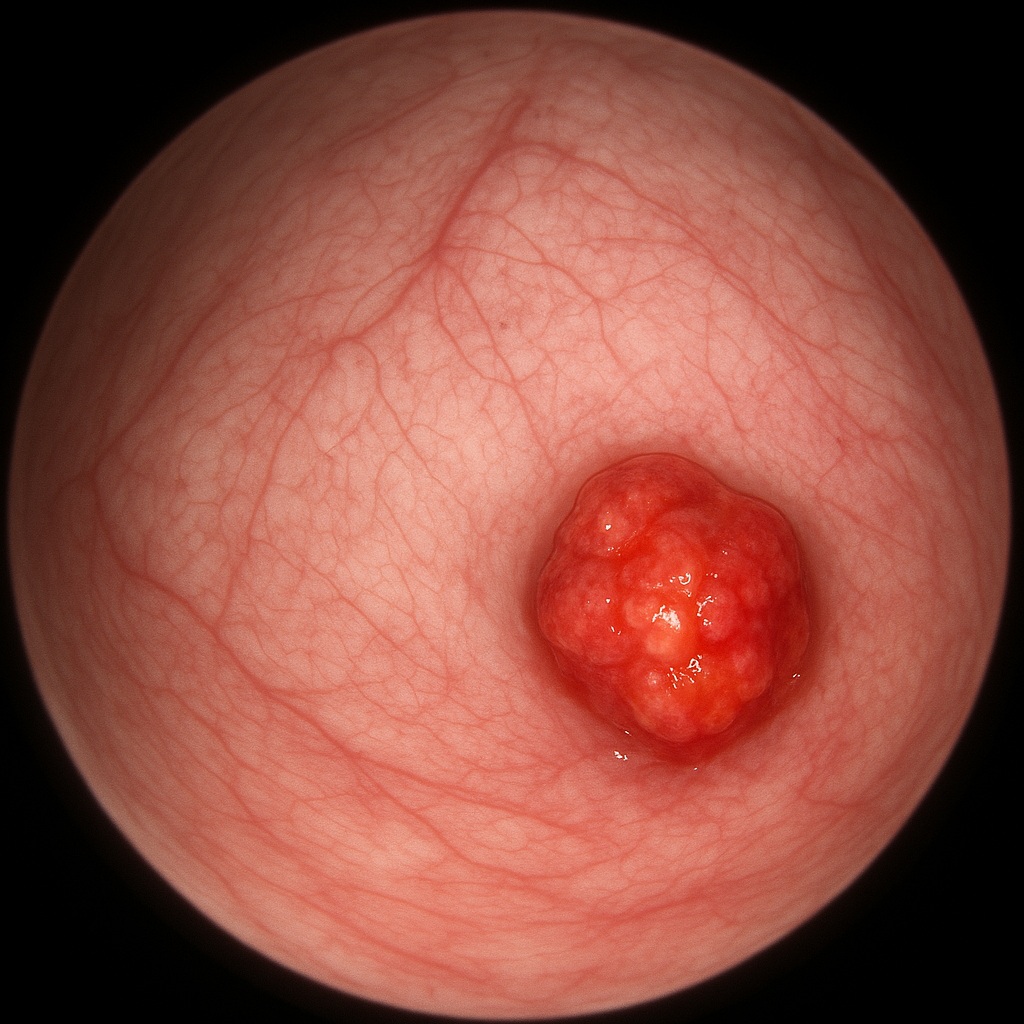Discovering a potential bladder tumor during a cystoscopy can understandably evoke anxiety and a whirlwind of questions. Cystoscopies are routinely performed to investigate various urinary symptoms like persistent blood in the urine, frequent urination, or pain while urinating. They provide a direct visualization of the bladder lining, allowing doctors to identify abnormalities that might otherwise go undetected. While most findings during a cystoscopy aren’t cancerous – often revealing inflammation, polyps, or other benign conditions – encountering what appears to be a tumor requires further investigation and careful management. Understanding what happens next, from initial diagnosis through potential treatment options, is crucial for navigating this process with informed confidence.
This article aims to provide comprehensive information about the experience of discovering a bladder tumor during cystoscopy. We will explore what it means when a tumor is suspected, the diagnostic procedures used to confirm its nature (benign or malignant), and an overview of common treatment approaches. It’s important to remember that every individual’s situation is unique, and this information should not substitute for personalized medical advice from your healthcare team. The goal here is to empower you with knowledge and address some common concerns when facing a potential bladder tumor diagnosis.
Understanding the Cystoscopy Findings
A cystoscopy allows direct visualization of the bladder and urethra using a thin, flexible tube equipped with a camera. When a physician identifies an abnormality resembling a tumor during this procedure, it doesn’t immediately equate to cancer. There are several possibilities – including papillomas, which are often benign growths, or inflammation mimicking a tumorous appearance. The initial finding is typically described based on its characteristics: size, shape, location within the bladder, and visual features like color and texture. This initial description guides further investigation.
The physician will likely take small biopsies from any suspicious areas during the cystoscopy itself. These are tiny tissue samples collected for microscopic examination by a pathologist. – Biopsies are essential for determining whether the growth is benign (non-cancerous) or malignant (cancerous). – The pathologist’s report will specify the type of tumor, if cancerous, and its grade – indicating how aggressive it appears to be. This grading system helps doctors predict how quickly the cancer might grow and spread.
It’s crucial to understand that even a biopsy doesn’t always provide definitive answers immediately. Sometimes, additional imaging or repeat cystoscopies are needed for clarification, particularly if the initial biopsy results are inconclusive. Your doctor will explain the reasoning behind any further tests and what they aim to achieve. The waiting period between the cystoscopy and receiving results can be stressful, but remember that this is a standard part of the diagnostic process. Understanding more about what is cystoscopy in bladder monitoring can help ease your concerns.
Diagnostic Procedures Following Cystoscopy
If the initial cystoscopy reveals a suspected tumor and biopsies are taken, several follow-up procedures might be necessary to confirm the diagnosis and determine the extent of the disease – if cancer is present. The most common next step is often a CT scan (computed tomography) or MRI (magnetic resonance imaging). – These imaging techniques provide detailed pictures of the bladder and surrounding tissues, helping to assess whether the tumor has invaded deeper into the bladder wall or spread to nearby organs like the kidneys, ureters, or lymph nodes.
Beyond imaging, further cystoscopies are frequently performed. A second-look cystoscopy may be scheduled shortly after the initial one to evaluate the biopsy sites and ensure adequate sampling was obtained. In some cases, a procedure called blue light cystoscopy is used. This involves administering a special drug that causes cancer cells to fluoresce under blue light, making them easier for the surgeon to identify during a subsequent cystoscopy. Often this process includes bladder tumor staging with cystoscopy.
Finally, urine cytology – examining urine samples for cancerous cells – can be performed. While not always accurate, it can help detect microscopic cancer cells that may have sloughed off from the tumor. The combination of these diagnostic tests provides your medical team with a comprehensive understanding of the situation, enabling them to develop an appropriate treatment plan.
Types of Bladder Tumors
Bladder tumors fall into several categories, each requiring a different approach to treatment and monitoring. – The most common type is urothelial carcinoma, also known as transitional cell carcinoma, which originates in the lining of the bladder. This accounts for about 90% of all bladder cancers. These are often detected early because they tend to cause blood in the urine.
Another less frequent type is squamous cell carcinoma, typically associated with chronic inflammation or infection within the bladder. Adenocarcinoma, a rarer form, develops from glandular cells and is often linked to previous radiation therapy or certain medications. Finally, sarcomas are extremely rare tumors that originate in the muscle layers of the bladder wall. It’s important to remember that cancer can be found during a routine exam.
Understanding the specific type of tumor is crucial for determining the best course of action. The stage and grade of the cancer – determined through diagnostic testing – also significantly impact treatment decisions. Stage refers to how far the cancer has spread, while grade indicates its aggressiveness. Your oncologist will explain these factors in detail during your consultation.
Treatment Options for Bladder Tumors
Treatment options vary widely based on the type, stage, and grade of the tumor, as well as the patient’s overall health. For early-stage, low-grade tumors confined to the bladder lining, a procedure called transurethral resection of bladder tumor (TURBT) is often the first line of treatment. – This involves removing the tumor through the urethra using specialized instruments during a cystoscopy.
Following TURBT, intravesical therapy – delivering medication directly into the bladder – is commonly used to prevent recurrence. Medications like Bacillus Calmette-Guérin (BCG), an immune stimulant, or chemotherapy agents are instilled into the bladder for several weeks or months. For more advanced tumors that have invaded deeper into the bladder wall or spread beyond the bladder, treatment options may include cystectomy – surgical removal of the entire bladder – followed by urinary reconstruction. Other systemic treatments, such as chemotherapy and immunotherapy, might be used to target cancer cells throughout the body. Understanding transurethral resection of bladder tumor is a key step in understanding treatment options.
Monitoring and Follow-Up Care
Even after successful treatment for a bladder tumor, ongoing monitoring is essential. Recurrence rates are relatively high with some types of bladder cancer, so regular follow-up appointments are crucial. – These typically involve cystoscopies, urine cytology, and imaging studies to check for any signs of recurrence.
Patients will often be advised to adopt lifestyle modifications that may help reduce the risk of recurrence. This can include staying well-hydrated, avoiding smoking, and minimizing exposure to certain chemicals found in dyes, paints, and industrial settings. Bladder tumor resection and recurrence risk is always a concern for patients.
A proactive approach to follow-up care is vital for early detection and prompt management of any potential recurrence. Your healthcare team will provide a personalized monitoring schedule based on your specific situation and risk factors. Maintaining open communication with your doctors and promptly reporting any new or concerning symptoms are essential components of long-term care.





















